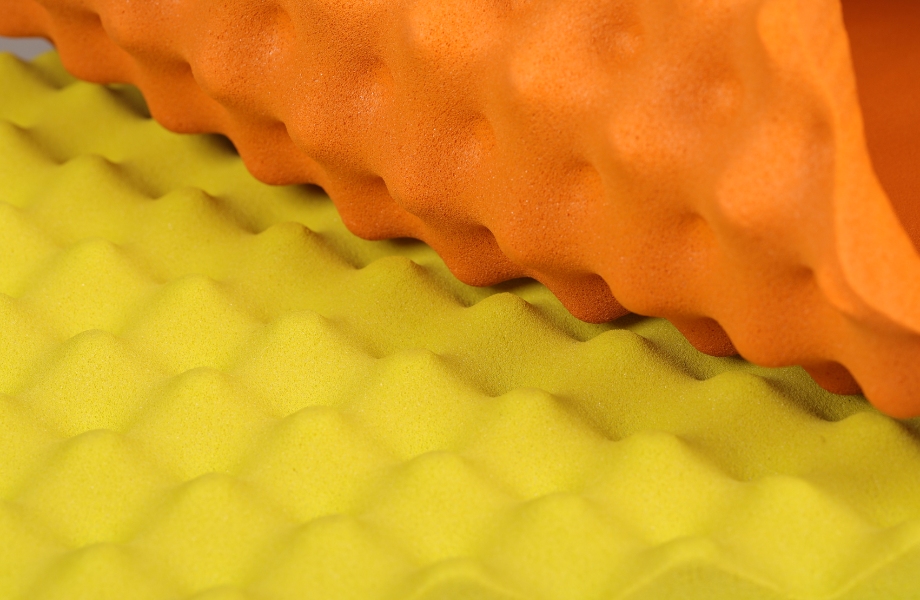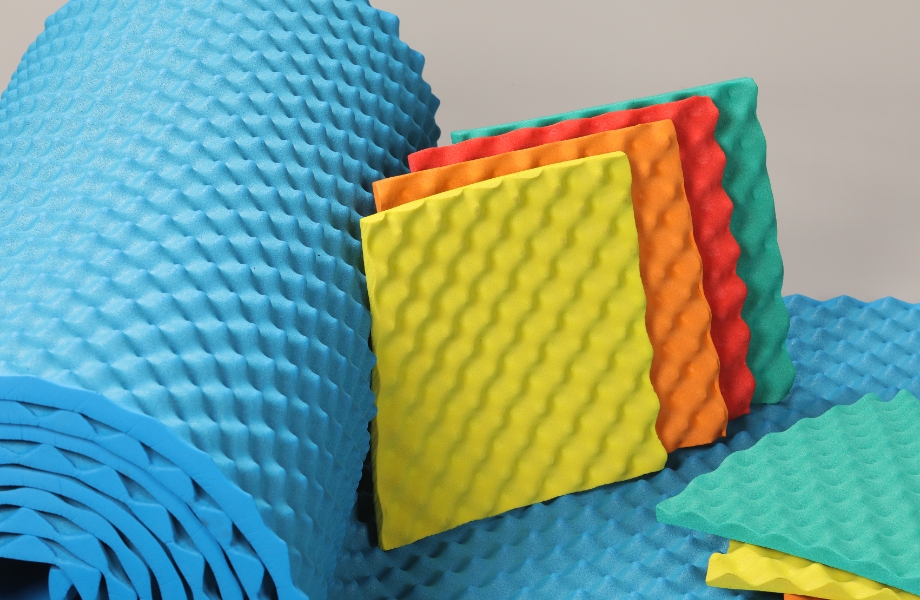E-mail: marketing@hbhuamei.com
Sound management can be a tough choice for people who want a quieter space for personal, professional, professional, or other purposes. Acoustic foam is often highlighted as one possible solution, but does it soundproof a room?
This comprehensive guide to acoustic foam explains its detailed capabilities, limitations, and appropriate uses, including insight into noise control.
So, let's begin.
Acoustic foam is a type of material engineered to control sound in the area it covers. These are lightweight and flexible polyurethane or melamine foams fabricated with distinctive wedge-shaped or pyramid forms.
It increases the surface area of the foam, thus being very effective for the absorption of sound waves.

People often confuse the functions of sound absorption and sound insulation. However, it's essential to differentiate between sound absorption and soundproofing.
Acoustic foam is excellent at absorbing sound waves and reducing echoes. When noise is constantly bouncing off of hard surfaces, it creates an echo, and the role of acoustic foam is to control this reverberation by reducing the excess noise and giving it an acoustically balanced bias, which can provide better sound quality in a room.
Soundproofing
Soundproofing prevents sound from either escaping or entering a room and, therefore, is a physical barrier to the transmission of sound through walls, ceilings, and floors. Products used to block sound are used inside walls or ceilings and are part of the building materials that, due to their higher density, usually reflect sound back into the room rather than penetrating it to the other side.
Sound absorption reduces a space's reverberant intensity, reducing the spread of noise and balancing the sound in a room. In fact, people can feel stress and discomfort when they are in a completely silent environment.
Acoustic foams magically work their wonders through energy trapping and dispersion. Here's how it works:
1. Porous Structure: Its foam composition entails minute interlocked cells, by which, with wave passage through a material medium like air, such waves would effectively be turned to heat due to the molecular effect this causes on conversion.
2. Shape and Design: The surface diffuses the sound waves through its patterns, such as pyramids or wedges, without reflecting them back into the room.
3. Frequency Response: Acoustic foam works best when it comes to the absorption of mid-to-high-frequency sound. It takes thickness, or rather, more specialized types of foam in order for bass and low frequencies to get absorbed completely.
While acoustic foam is great for enhancing the quality of a room acoustically, it doesn't solely work for soundproofing.
Here is why:
Insufficient Mass
Soundproofing relies on much mass to hinder sound waves. Acoustic foam is lightweight and lacks the density needed to prevent noise from passing through walls or any other structure.
Limitations in Blocking Noise
Acoustic foam is designed to absorb all the airborne sound within a room. It cannot effectively block the external noise or the vibrations caused by structure-borne sounds.
Complementary Use
Acoustic foam works much better with other soundproofing methods, such as mass-loaded vinyl, resilient channels, or higher-density acoustic panels.
Best Applications for Acoustic Foam
Although acoustic foam can't soundproof a room entirely, it's really effective for certain scenarios where sound absorption is your ultimate goal.
1. Recording Studios: Avoid reverberation for clear, echo-free recordings.
2. Podcast Rooms: Enhance voice clarity for professional-sounding audio.
3. Home Theaters: Enhance the sound quality for thrilling viewing each time.
4. Offices: Minimize distractions and improve speech intelligibility in open-plan spaces.
5. Gaming Setup: Enhance the audio accuracy and raise the feel of your gameplay.
You may have experienced noise intrusion from your neighbors or from the street, and this is when soundproofing is needed. consider combining acoustic foam with the following materials:
Mass-Loaded Vinyl
The material's dense and flexible nature forms an effective barrier to airborne sound.
Acoustic Insulation
Insulation provides a tight seal with fiberglass or mineral wool, blocking many noises that permeate walls and ceilings.
Double Drywall
This can be improved further by adding an extra layer of drywall with some sort of sound-damping compound like Green Glue.
Sealing Gaps
Seal any gaps around doors and windows by reinstalling weatherstripping, acoustic caulk, or door sweeps.
Carpets and Rugs
Soft floorings act to absorb the sound and reduce transmission.

Huamei Sound-Absorbing Foam is a good option for a person who wants to eliminate the echo from his space by providing good-quality sound. Designed for sound absorption, it has been made in such a way that your room becomes quieter, be it a home theater, an office, or a studio.
1. Great at Absorbing Sound: The foam is made to soak up sound waves, especially mid-to-high frequencies, helping reduce noise and echoes.
2. Strong and Long-Lasting: The high-quality materials used in its manufacture ensure that it is long-lasting and durable in performance.
3. Easy to use Anywhere: You can install it on walls, ceilings, or even in bigger spaces like factories.
4. Eco-Friendly: The foam is made up of friendly environmental materials, so it is good for you and Mother Earth, too.
5. Looks Nice Too: It's offered in a number of different shapes and finishes, so besides tuning your room for sound, it enhances its appeal.
Huamei Sound-Absorbing Foam is to be used conjointly with other soundproofing materials like heavy barriers or insulation; it serves to dampen the noise either inside or outside the room.
Conclusion
Acoustic foam really is a powerhouse in enhancing the acoustics of the room, with the main functions of echo reduction and reverberation. Acoustic foam basically is not designed to be a total soundproofing solution. Noise isolation can only work effectively when done with other soundproofing materials complemented by techniques.
By understanding the capabilities and limitations of acoustic foam, you can make informed decisions about its use, creating an environment tailored to your specific sound management needs.
Copyright © Huamei Energy-saving Technology Group Co., Ltd. All Rights Reserved | Sitemap | Privacy Policy
Insulation solutions LIST: Insulation solutions LIST